Last updated: December 22, 2017
Article
Reconstructing a Flagstaff on the Historic Vancouver Barracks Parade Ground
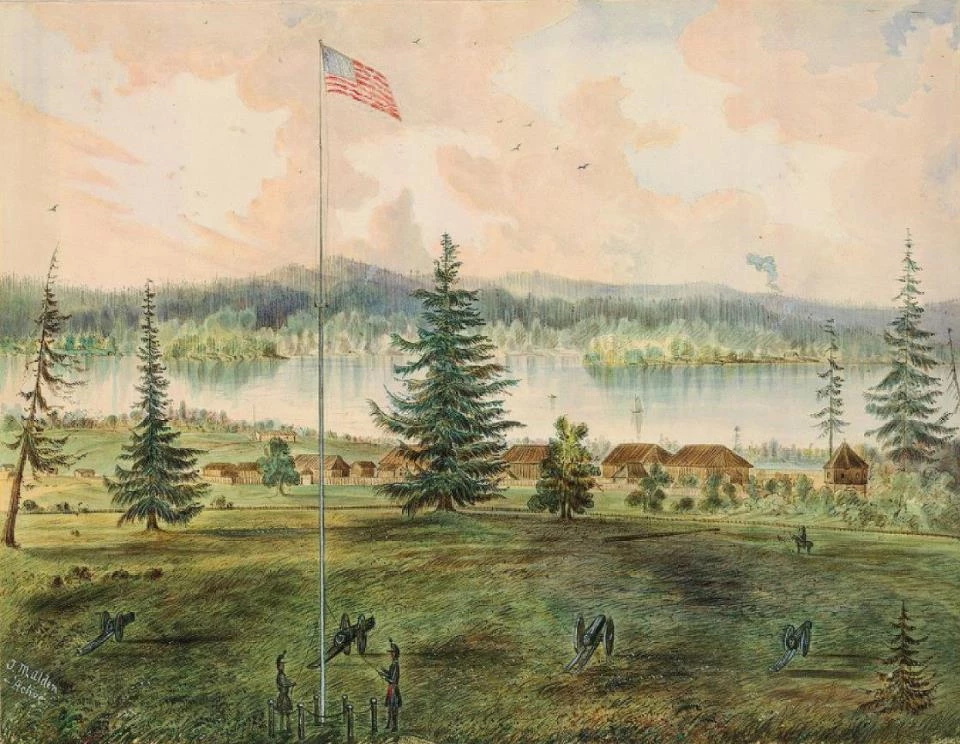
Yale Collection of American Literature, Yale University, CT
The center of the U.S. Army post at Fort Vancouver (also known as Vancouver Barracks) from its founding in 1849 until the final troops left the garrison in 2012 was the Parade Ground. The Parade Ground formed the primary training, drilling, and ceremonial space for troops headquartered at the post. The most important feature of the Parade Ground was the central flagstaff, upon which the American colors flew. The flag is a tangible object that functioned as a visual reminder of the common group identity of the soldiers.
Fort Vancouver National Historic Site, in partnership with the Fort Vancouver Lions, the Vancouver Metro Sunset Rotary Club, the Community Military Appreciation Committee, the Friends of Fort Vancouver, and the City of Vancouver, has worked on an effort over five years to reconstruct the central flagstaff that stood on the Parade Ground from 1854 to 1879. This project restores an important historical feature to the post, and will serve as a new venue for events at the national park.
Historical maps, drawings, paintings, and photographs indicate that between 1849 and 2012, there were seven known main flagstaff locations at the military base. The location of the reconstructed flagstaff, where the post's flagstaff stood from 1854 to 1879, was the second of these seven locations. The symbolic location is in the center of the Parade Ground, south of the Grant House, which at that time was the Commanding Officer's Quarters.
Fort Vancouver National Historic Site, in partnership with the Fort Vancouver Lions, the Vancouver Metro Sunset Rotary Club, the Community Military Appreciation Committee, the Friends of Fort Vancouver, and the City of Vancouver, has worked on an effort over five years to reconstruct the central flagstaff that stood on the Parade Ground from 1854 to 1879. This project restores an important historical feature to the post, and will serve as a new venue for events at the national park.
Historical maps, drawings, paintings, and photographs indicate that between 1849 and 2012, there were seven known main flagstaff locations at the military base. The location of the reconstructed flagstaff, where the post's flagstaff stood from 1854 to 1879, was the second of these seven locations. The symbolic location is in the center of the Parade Ground, south of the Grant House, which at that time was the Commanding Officer's Quarters.
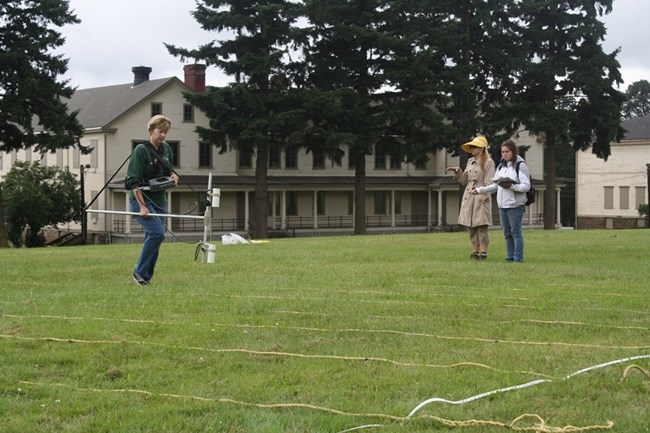
NPS Photo
In the summer of 2014, as part of the national park's Public Archaeology Field School, National Park Service archaeologists worked with students from Portland State University and Washington State University Vancouver to excavate four 1 meter square units. The results of these excavations revealed sub-surface archaeological artifact deposits and cultural features associated with the construction and demolition of the 1854-1879 flagstaff. Archaeologists dug to a depth of 9 feet below ground to find the remains of the original flagstaff.
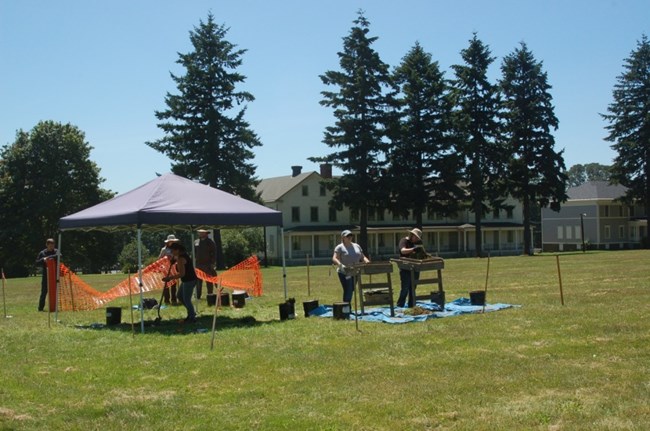
NPS Photo
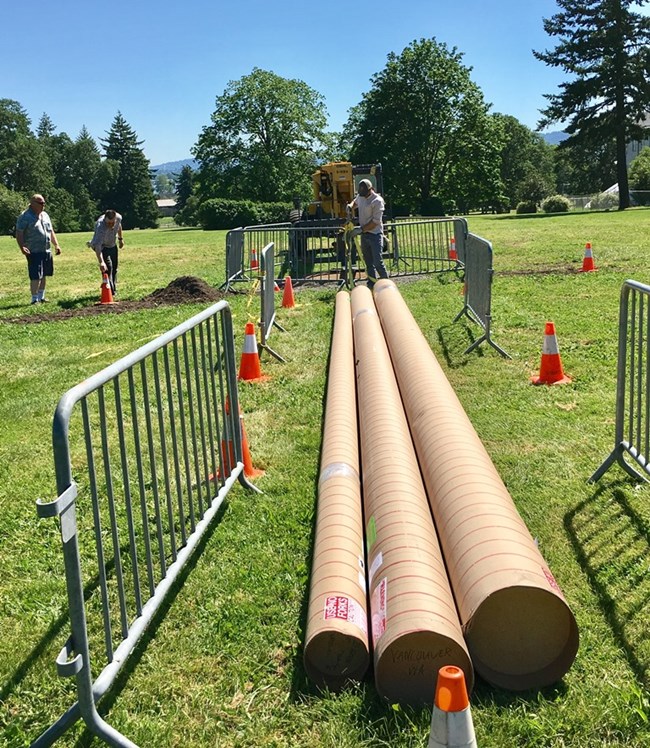
NPS Photo
The National Park Service will dedicated the reconstructed flagstaff on May 29, 2017, at the annual Memorial Day Observance hosted by the Community Military Appreciation Committee. The flagstaff was dedicated in honor of servicemen and women from Clark County who have given their lives in service of their country. The flagstaff will serve as an important symbolic feature at the national park, and will be an important site where the local community's military heritage can be honored.
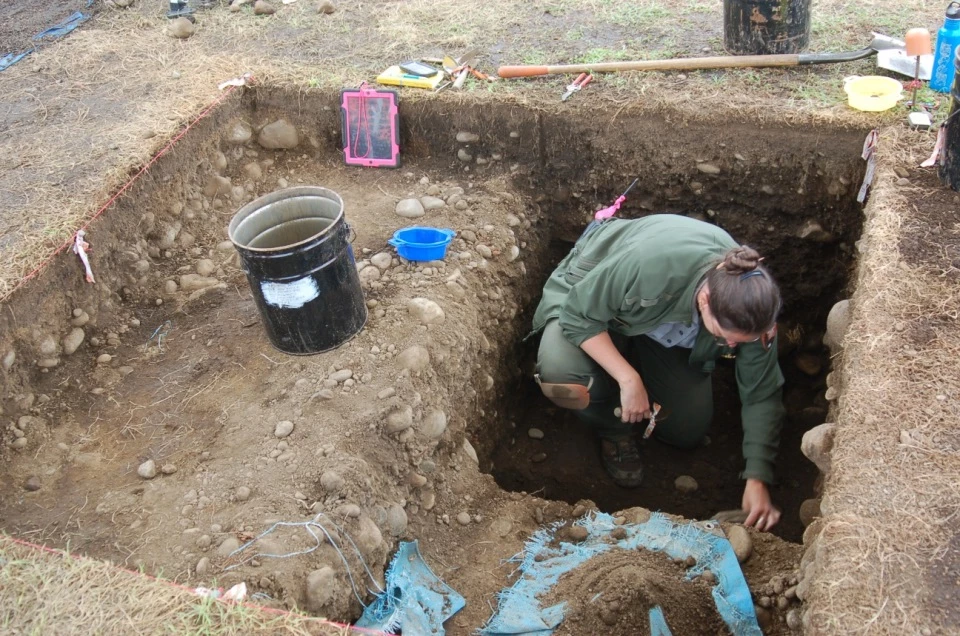
NPS Photo
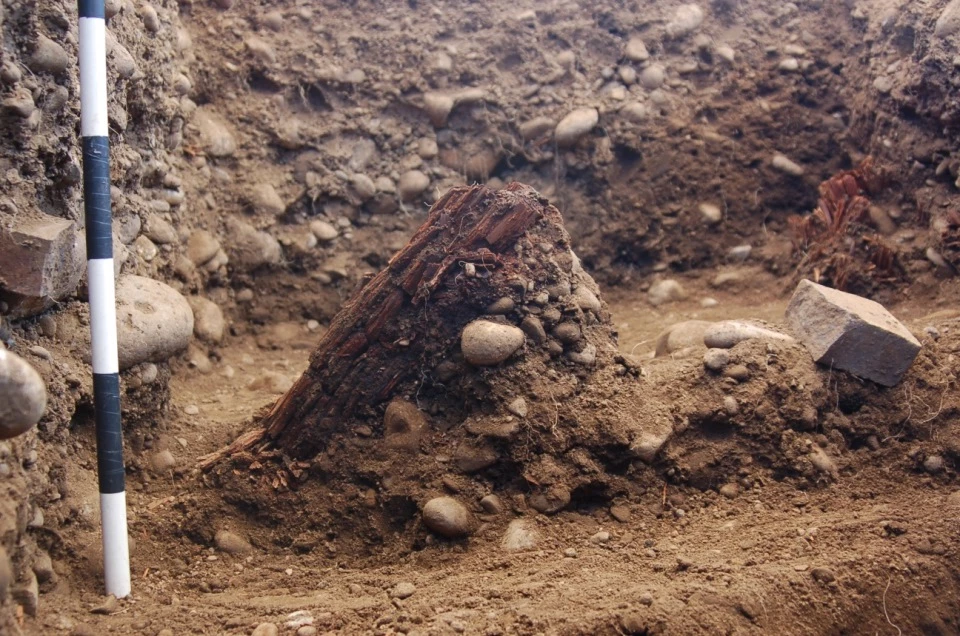
NPS Photo
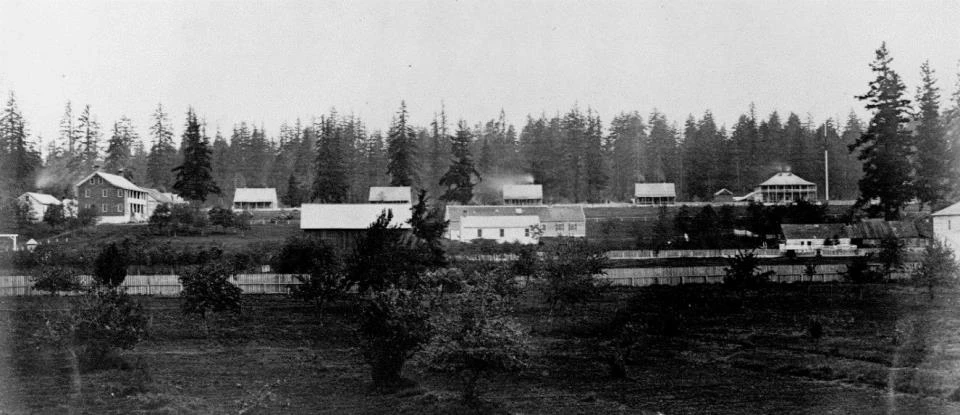
Library of Congress, Washington D.C. No. LC-USZC4-11408

NPS Photo
